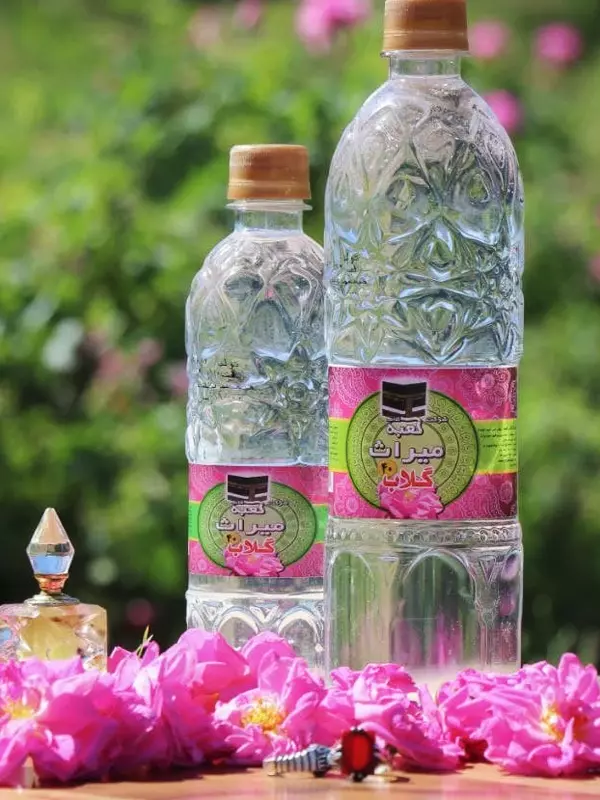
of the world
kashan history
Kashan has a rich and storied history that dates back thousands of years. The city has been inhabited since prehistoric times and has witnessed the rise and fall of various civilizations. Here is an overview of the history of Kashan:
Ancient Times: Archaeological evidence suggests that Kashan and its surrounding region have been inhabited since the Paleolithic era. The earliest recorded settlement in the area dates back to the Elamite civilization around 6000 BCE. Over the centuries, the region came under the influence of various empires, including the Medes, Achaemenids, Seleucids, and Parthians.
Islamic Era: With the advent of Islam in the 7th century CE, Kashan became an important city in the Islamic world. It flourished under the Abbasid Caliphate and served as a significant cultural and commercial center on the Silk Road trade route. Kashan was renowned for its textiles, ceramics, and carpet production.
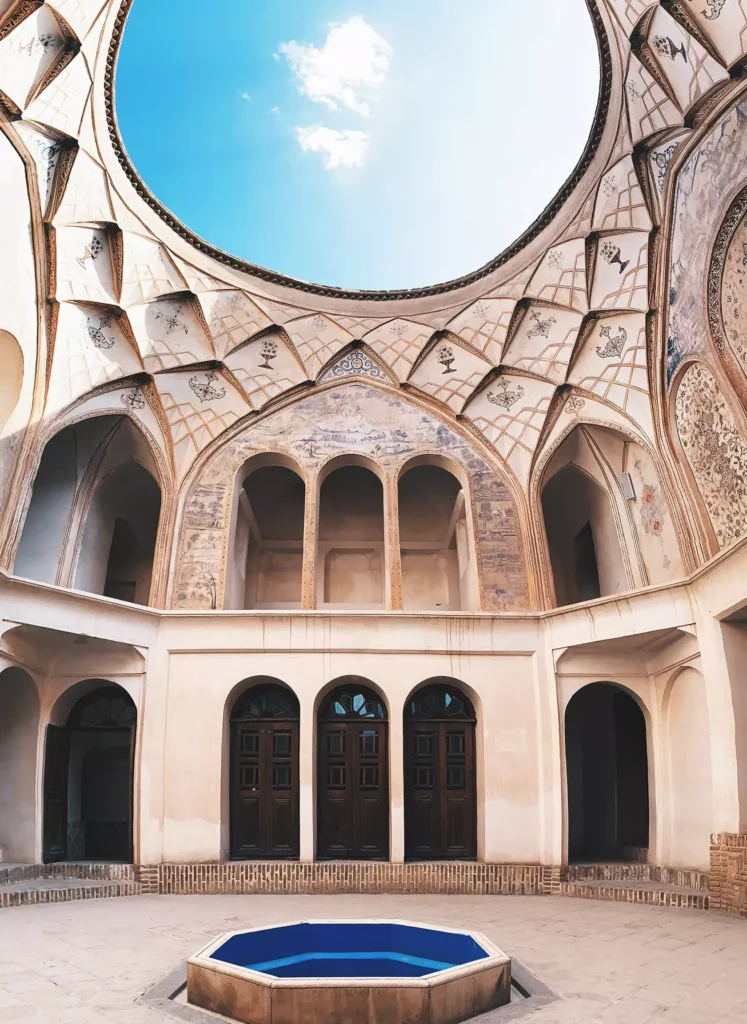
Seljuk and Mongol Periods: During the 11th and 12th centuries, Kashan came under the control of the Seljuk Empire. It thrived as a center of Islamic art and architecture during this period. In the 13th century, Kashan fell to the Mongols, and the city suffered significant destruction and depopulation.
Safavid Dynasty: The Safavid Dynasty, which ruled Persia from the 16th to the 18th centuries, brought prosperity and stability to Kashan. The city became a center for trade, arts, and craftsmanship. Notable architectural landmarks, such as the Fin Garden and numerous grand houses, were constructed during this period.
Qajar Period: In the 18th and 19th centuries, Kashan became a center for Persian rug production. The city also played a significant role in the Constitutional Revolution of Iran in the early 20th century.
Modern Era: Kashan underwent further development and urbanization during the Pahlavi Dynasty in the 20th century. The city experienced growth in industries such as textiles, carpets, ceramics, and rosewater production.
Today, Kashan stands as a city with a rich cultural heritage and architectural legacy. Its historical sites, traditional houses, and beautiful gardens attract visitors from around the world, showcasing the city’s illustrious past and its contributions to Persian art, architecture, and craftsmanship.
Kashan is a historic city located in the Isfahan Province of Iran. It is situated in the central part of the country, approximately 240 kilometers (150 miles) south of Tehran, the capital of Iran. Kashan has a rich cultural and historical background, dating back thousands of years.
The city is known for its unique architecture, beautiful gardens, traditional houses, and historical sites. One of the notable attractions in Kashan is the Fin Garden, a UNESCO World Heritage Site. It is a beautiful Persian garden with lush greenery, fountains, and a historic pavilion. The Fin Garden is considered one of the finest examples of Persian garden design.
Kashan is also famous for its traditional houses, such as the Tabatabaei House and the Borujerdi House. These houses showcase the traditional Persian architecture and provide a glimpse into the lifestyle of wealthy families during the 18th and 19th centuries.
Another prominent landmark in Kashan is the Agha Bozorg Mosque. It is an architectural masterpiece with intricate tile work and a beautiful courtyard. The mosque is a popular place of worship and attracts visitors with its unique design.
In addition to its historical attractions, Kashan is renowned for its production of high-quality carpets, ceramics, and rosewater. The city has a long history of producing exquisite Persian carpets known for their intricate designs and craftsmanship.
Kashan’s climate is characterized by hot summers and cool winters. The best time to visit is during spring (March to May) and autumn (September to November) when the weather is mild and pleasant.
Overall, Kashan offers a blend of history, culture, and natural beauty, making it a captivating destination for travelers interested in exploring Iran’s heritage and architectural treasures.
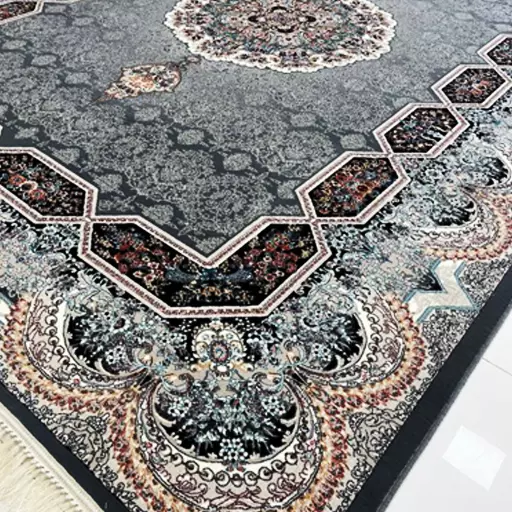
kashan rug
Kashan rugs are a type of Persian carpet that originate from the city of Kashan in Iran. They are renowned for their exquisite craftsmanship, intricate designs, and high-quality materials. Kashan has a long history of rug weaving, dating back several centuries.
Kashan rugs are traditionally handwoven using the Persian knot technique, where individual knots are tied onto the warp threads to create the pile. The rugs are usually made with a wool pile on a cotton foundation, resulting in a durable and luxurious carpet. However, silk is sometimes used for finer, more intricate pieces.
One of the distinguishing features of Kashan rugs is their design. They often feature a central medallion surrounded by elaborate floral motifs, arabesques, and intricate borders. The colors used in Kashan rugs are typically rich and vibrant, with deep reds, blues, and ivory as prominent hues. The designs often reflect the influence of Persian art and architecture, with motifs inspired by nature, historical buildings, and geometric patterns.
Kashan rugs are known for their fine craftsmanship and attention to detail. Skilled artisans spend months or even years hand-knotting each rug, ensuring precision and quality. The knot density of Kashan rugs can be quite high, resulting in a dense and plush pile that feels luxurious underfoot.
Due to their beauty and quality, Kashan rugs have gained international recognition and are highly sought after by collectors and enthusiasts worldwide. Antique Kashan rugs, especially those dating back to the 19th and early 20th centuries, are particularly prized for their historical significance and artistic value.
Today, Kashan continues to be an important center for rug production in Iran. The city is home to many skilled weavers and workshops that carry on the tradition of creating exquisite Kashan rugs. Whether as decorative pieces or valuable investments, Kashan rugs are cherished for their timeless beauty and artistic merit.
kashan vessel
Kashan vessels, also known as Kashan ceramics, are a type of pottery that originated from the city of Kashan in Iran. Kashan has a long history of ceramic production, dating back to ancient times. Kashan vessels are highly regarded for their exquisite craftsmanship, elegant designs, and vibrant colors.
Kashan vessels are typically made using a technique called “fritware” or “stonepaste.” This technique involves mixing ground quartz, silica, and glass with clay to create a paste that is then molded and fired at high temperatures. The result is a durable and translucent ceramic body that is often covered with a tin glaze to give it a lustrous white appearance.
One of the distinctive features of Kashan vessels is their intricate decoration. They are often adorned with detailed patterns, including floral motifs, geometric designs, and calligraphy. The designs are typically painted by hand using vibrant colors such as cobalt blue, turquoise, and emerald green. Some vessels also feature gold or silver accents, adding to their opulence.
Kashan vessels come in various forms and sizes, including bowls, plates, vases, and ewers. These vessels were not only utilitarian objects but also works of art, often commissioned by wealthy patrons or used for royal court ceremonies.
During the Islamic Golden Age (8th to 13th centuries), Kashan vessels reached their peak in terms of quality and artistic expression. They were highly prized throughout the Islamic world and beyond, with examples found in collections and museums worldwide.
Today, Kashan vessels continue to be produced, albeit in smaller quantities. Modern potters in Kashan draw inspiration from traditional designs and techniques, while also incorporating contemporary elements to create unique and innovative pieces.
Whether ancient or modern, Kashan vessels represent the rich artistic heritage of Iran and are cherished for their beauty, historical significance, and the skill of their craftsmen. They serve as a testament to the enduring legacy of Kashan’s ceramic tradition.
kashan tour
A Kashan tour offers a wonderful opportunity to explore the historical, cultural, and architectural treasures of this enchanting city in Iran. Kashan is known for its beautifully preserved traditional houses, lush gardens, historic sites, and vibrant bazaars. Here’s an overview of what you can expect on a Kashan tour:
Traditional Houses: Kashan is renowned for its exquisite traditional houses, such as the Tabatabaei House, Borujerdi House, and Abbasian Historical House. These houses showcase traditional Persian architecture with stunning courtyards, intricate tile work, beautiful gardens, and unique features like windcatchers (badgirs) that provide natural ventilation. Visiting these houses offers a glimpse into the lifestyle and opulence of the Persian elite in the past.
Fin Garden: A tour of Kashan usually includes a visit to Fin Garden, a UNESCO World Heritage Site. Fin Garden is a stunning Persian garden renowned for its symmetrical design, lush greenery, flowing water channels, and a historic pavilion. It’s a tranquil and scenic location where you can relax and appreciate the beauty of Persian garden design.
Bazaar-e Kashan: Explore the bustling bazaars of Kashan, such as Bazaar-e Kashan, where you can experience the vibrant atmosphere, shop for traditional handicrafts, carpets, ceramics, spices, and immerse yourself in the local culture. The bazaar is a treasure trove of sights, sounds, and flavors.
Historical Sites: Kashan boasts several historical sites worth visiting. One of them is the Agha Bozorg Mosque, an architectural gem with intricate tile work and a peaceful courtyard. Other notable sites include Sultan Amir Ahmad Bathhouse, a beautifully preserved historic hammam, and the Aminoddole Caravanserai, a centuries-old trading post.
Rosewater Production: Kashan is famous for its rosewater production. If you visit during the rose harvesting season (typically in late spring), you can witness the traditional process of extracting rosewater from blooming roses. Some tours offer the opportunity to visit rosewater distilleries and learn about this fragrant industry.
Local Cuisine: Don’t miss the chance to savor the delicious local cuisine of Kashan. The city is known for its traditional dishes and sweets, such as Kashan’s famous rosewater-infused desserts like “sohan” and “gaz.” Enjoying a meal at a traditional restaurant or trying local street food can be a delightful part of your tour.
It’s worth noting that Kashan is often included as a stop on tours that cover the larger region of Iran, including cities like Tehran, Isfahan, and Yazd. These comprehensive tours offer a broader exploration of Iran’s cultural and historical heritage.
When planning a Kashan tour, consider booking with reputable tour operators or travel agencies that specialize in Iran tours. They can provide knowledgeable guides, transportation, accommodation, and a well-organized itinerary to ensure you make the most of your visit to Kashan.
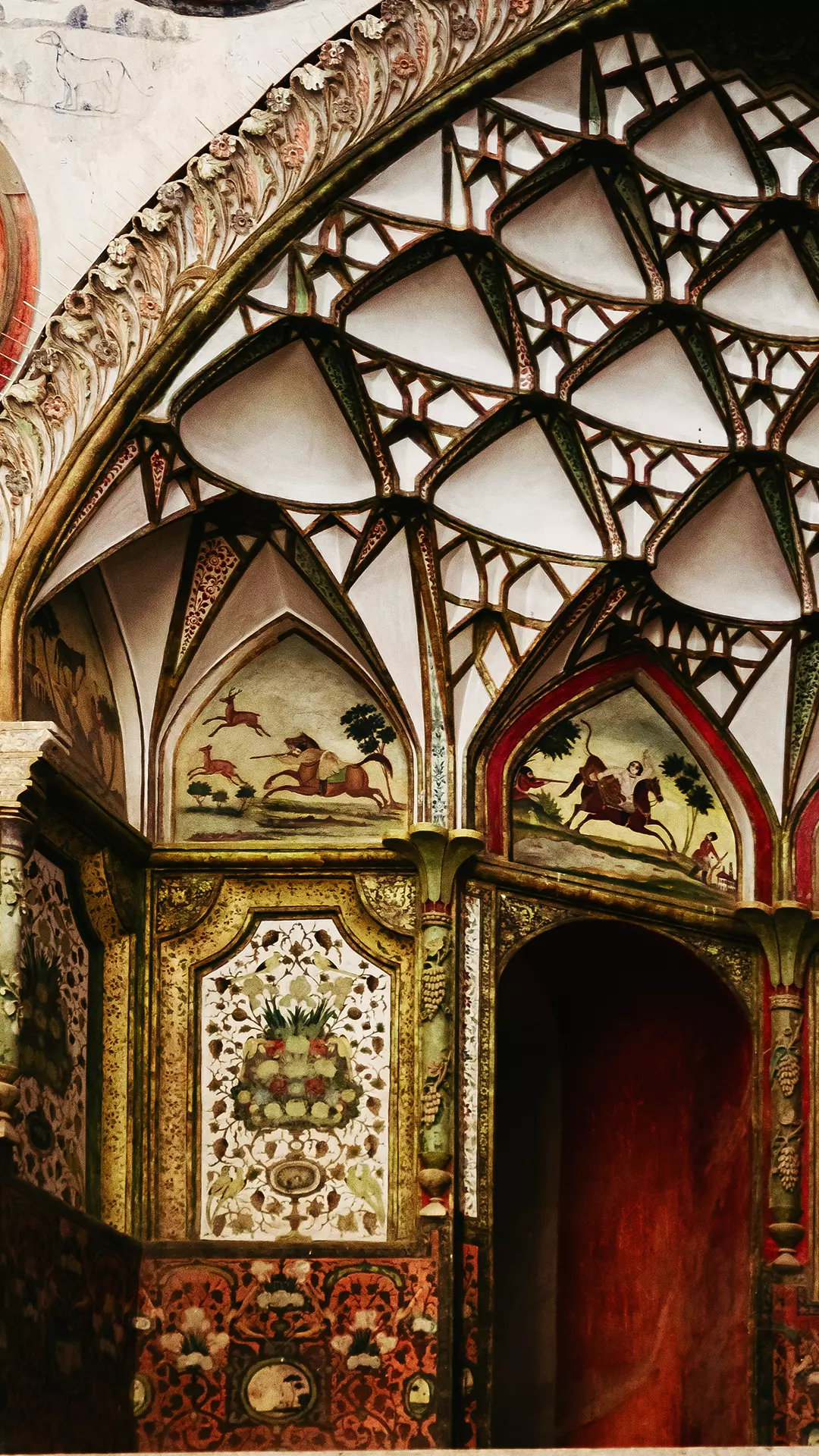
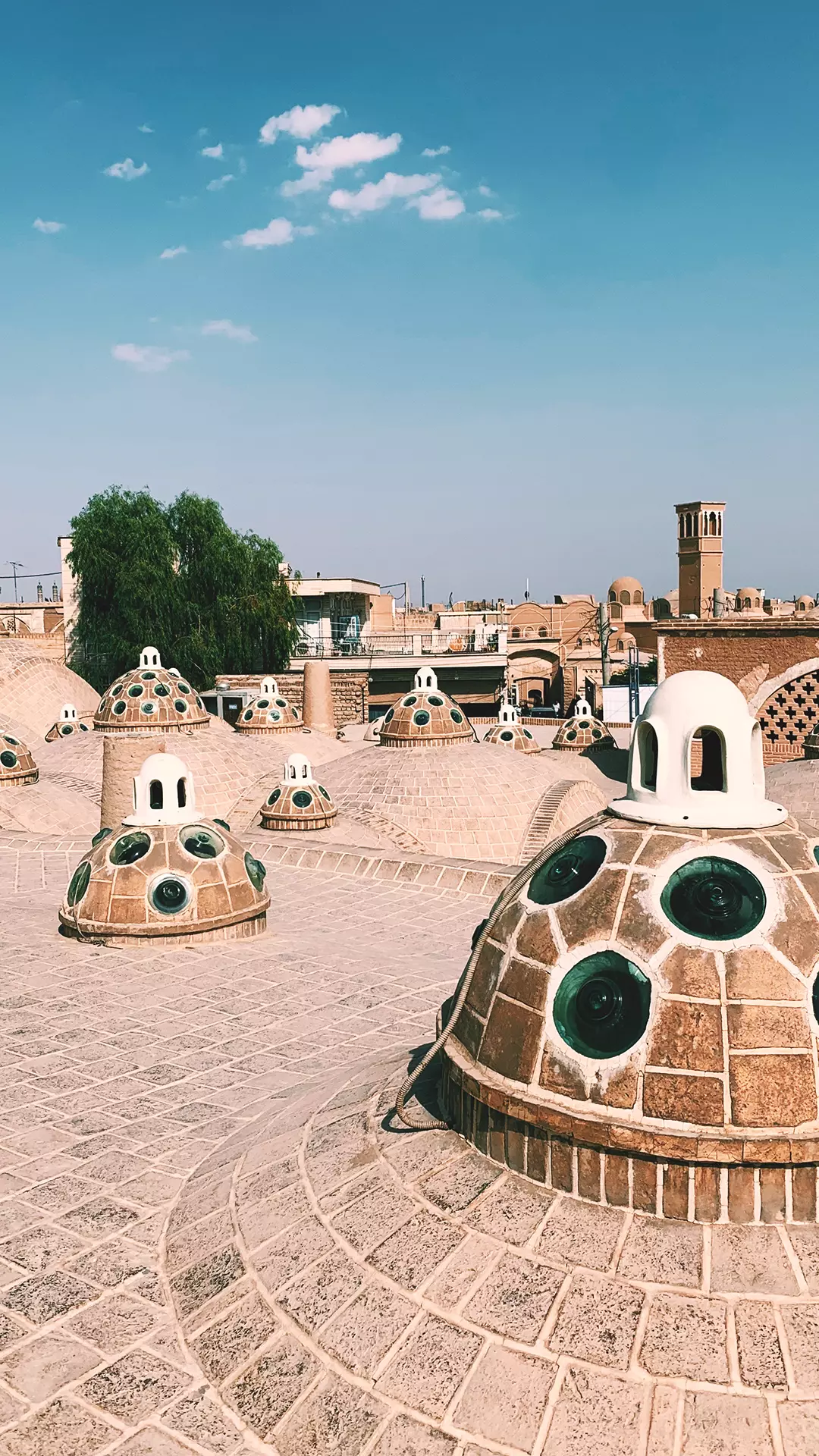
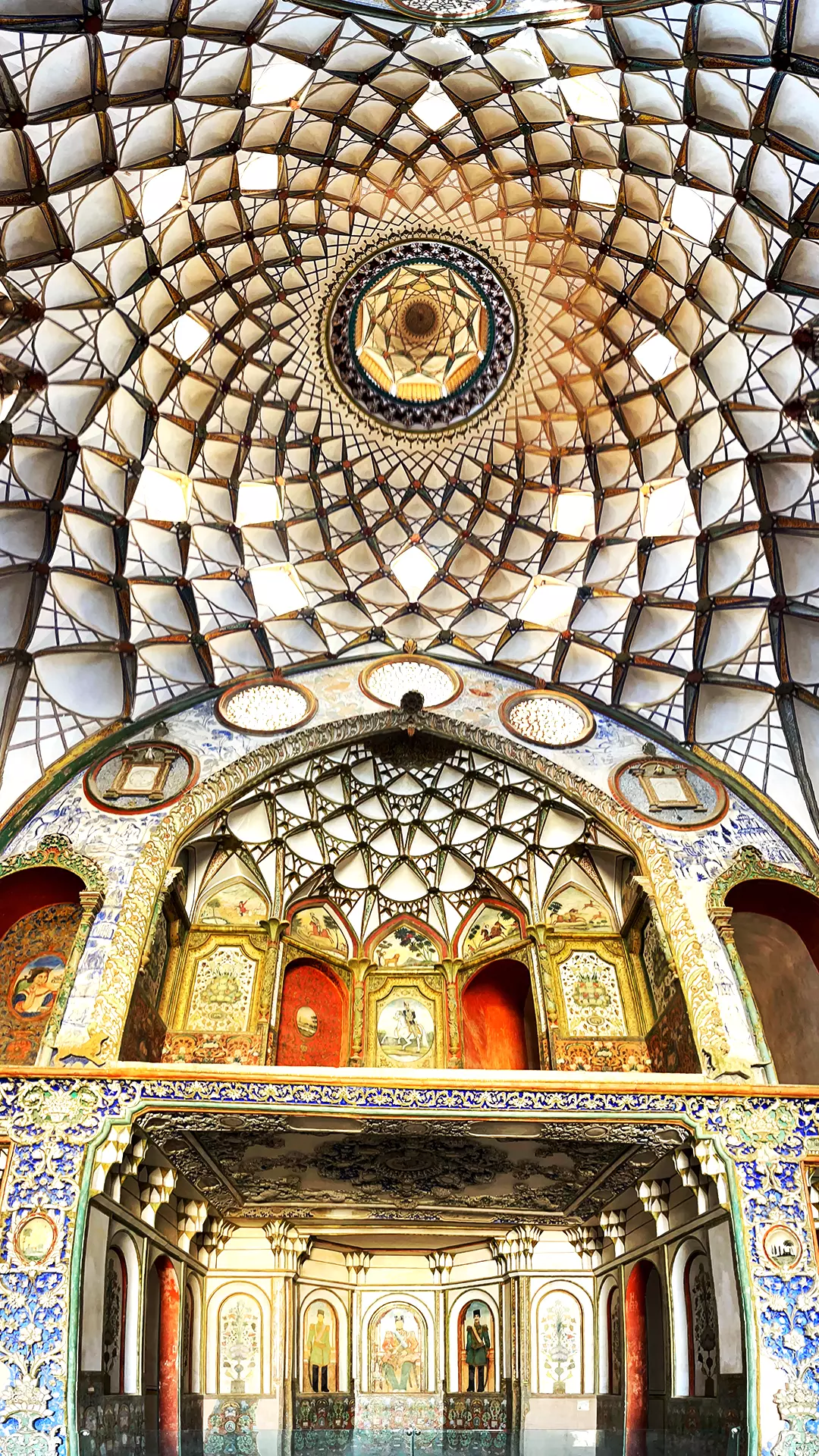
what is kashan meaning?
The word “Kashan” has Persian origins and carries multiple interpretations. While the precise etymology is not universally agreed upon, there are a few common meanings associated with the name:
Kashan as “Place of Tiles”: One interpretation suggests that the name “Kashan” is derived from the Persian words “kashi” meaning “tile” and “-an” indicating a place or locality. This interpretation highlights the historical significance of Kashan in the production of ceramic tiles, which were highly regarded for their intricate designs and craftsmanship.
Kashan as “Land of Kash”: Another interpretation proposes that “Kashan” is derived from the Persian word “kash” meaning “to scatter” or “to strew.” Accordingly, “Kashan” can be interpreted as the “Land of Kash,” referring to a region with scattered or dispersed settlements.
Kashan as “Sugar Bowl”: Yet another interpretation suggests that the name “Kashan” is derived from the Persian word “kashaneh” meaning “sugar bowl” or “container for sugar.” This interpretation may refer to the historical importance of Kashan in sugar production and trade.
It’s important to note that these interpretations are based on linguistic and historical analysis, and the exact origin and meaning of the name “Kashan” may vary depending on different sources and cultural perspectives. However, Kashan’s historical association with tile production, its significance as a settlement, and its role in industries like ceramics and sugar have contributed to these popular interpretations of its name.
kashan weather
Kashan experiences a climate that is classified as a hot desert climate (BWh) according to the Köppen climate classification system. The city is characterized by hot and dry summers, mild winters, and low annual precipitation. Here’s a breakdown of the typical weather conditions in Kashan:
Summers (June to August): Summers in Kashan are hot and dry, with temperatures often exceeding 35°C (95°F). July and August are the hottest months, with temperatures occasionally reaching above 40°C (104°F). The low humidity levels provide some relief from the heat, but it’s advisable to stay hydrated and seek shade during the peak afternoon hours.
Autumn (September to November): Autumn in Kashan is generally mild and pleasant. Temperatures gradually begin to decrease, ranging from around 25°C (77°F) in September to 15°C (59°F) in November. The weather is typically dry, with occasional cool breezes. It’s a favorable time to visit Kashan and explore its attractions without the extreme heat of summer.
Winters (December to February): Winters in Kashan are relatively mild compared to many other regions in Iran. Average temperatures range from around 7°C (45°F) to 14°C (57°F) during the day, with colder nights. While snowfall is rare, it may occur occasionally during the winter months. However, it’s generally a dry season with little precipitation.
Spring (March to May): Spring in Kashan is mild and comfortable, with temperatures gradually increasing. March and April have pleasant daytime temperatures ranging from around 15°C (59°F) to 25°C (77°F). May can be warmer, with temperatures occasionally reaching the mid-30s Celsius (mid-90s Fahrenheit). It’s a beautiful time to witness the blooming of flowers and enjoy the gardens in Kashan.
Overall, if you’re planning a visit to Kashan, the best time to go would be during the spring (March to May) or autumn (September to November) when the weather is milder and more pleasant for outdoor activities. However, it’s important to note that the city’s desert climate means that temperatures can vary significantly between day and night, so it’s advisable to dress in layers to adapt to the changing temperatures.
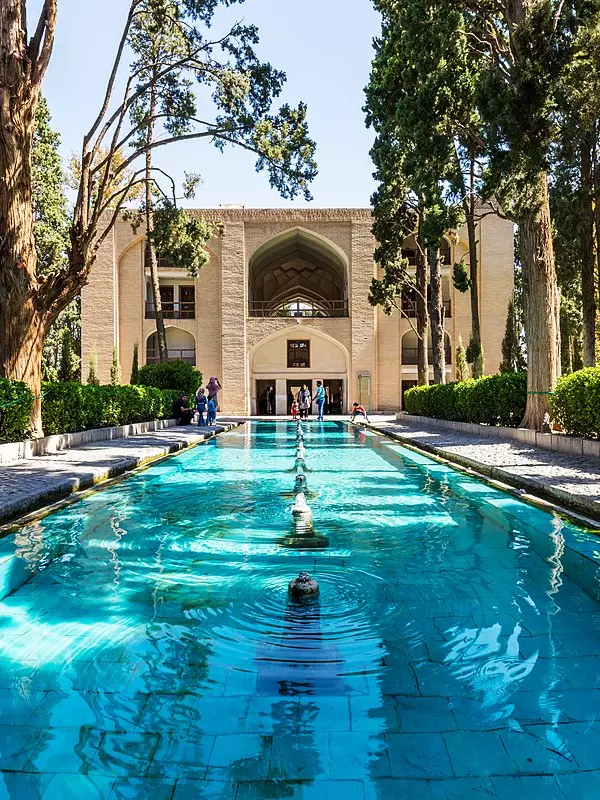
Fin
Garden
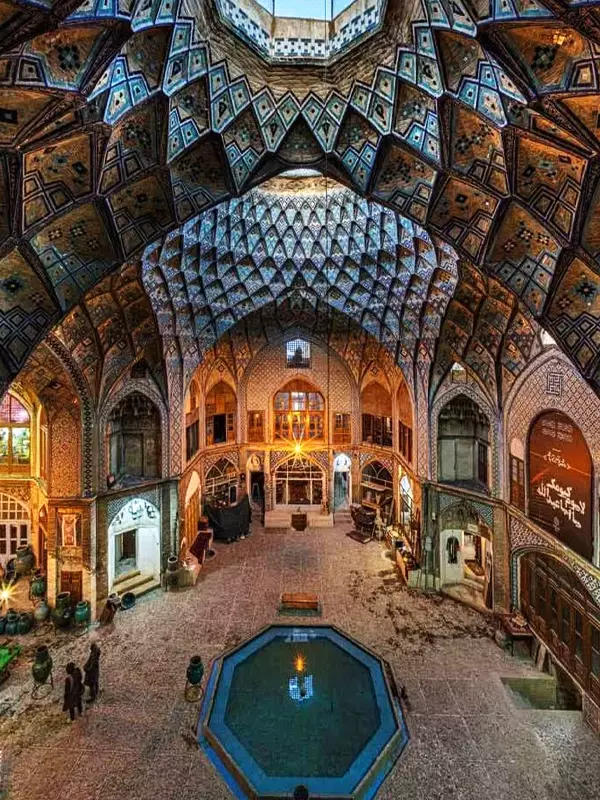
Bazaar-e
Kashan
